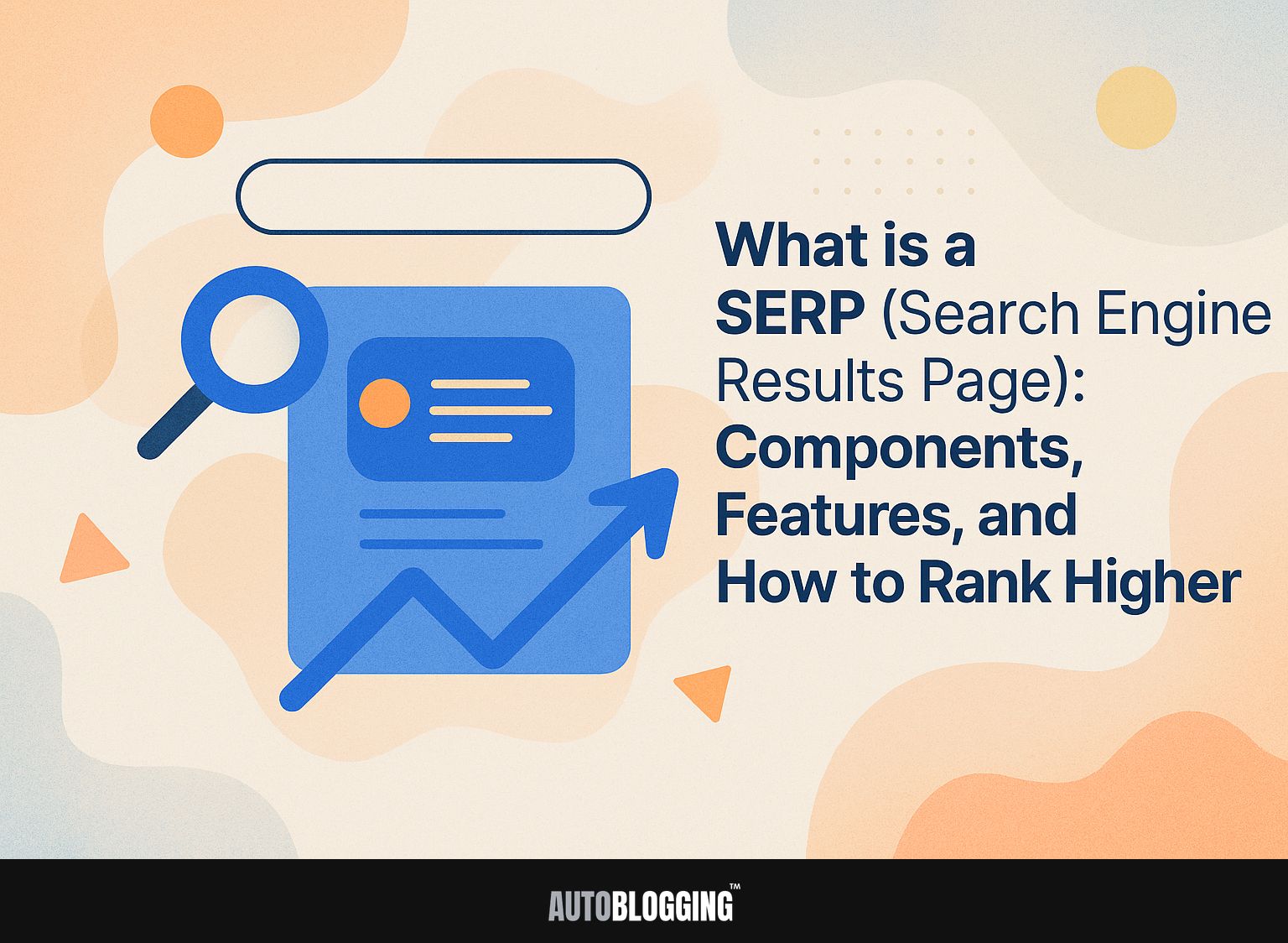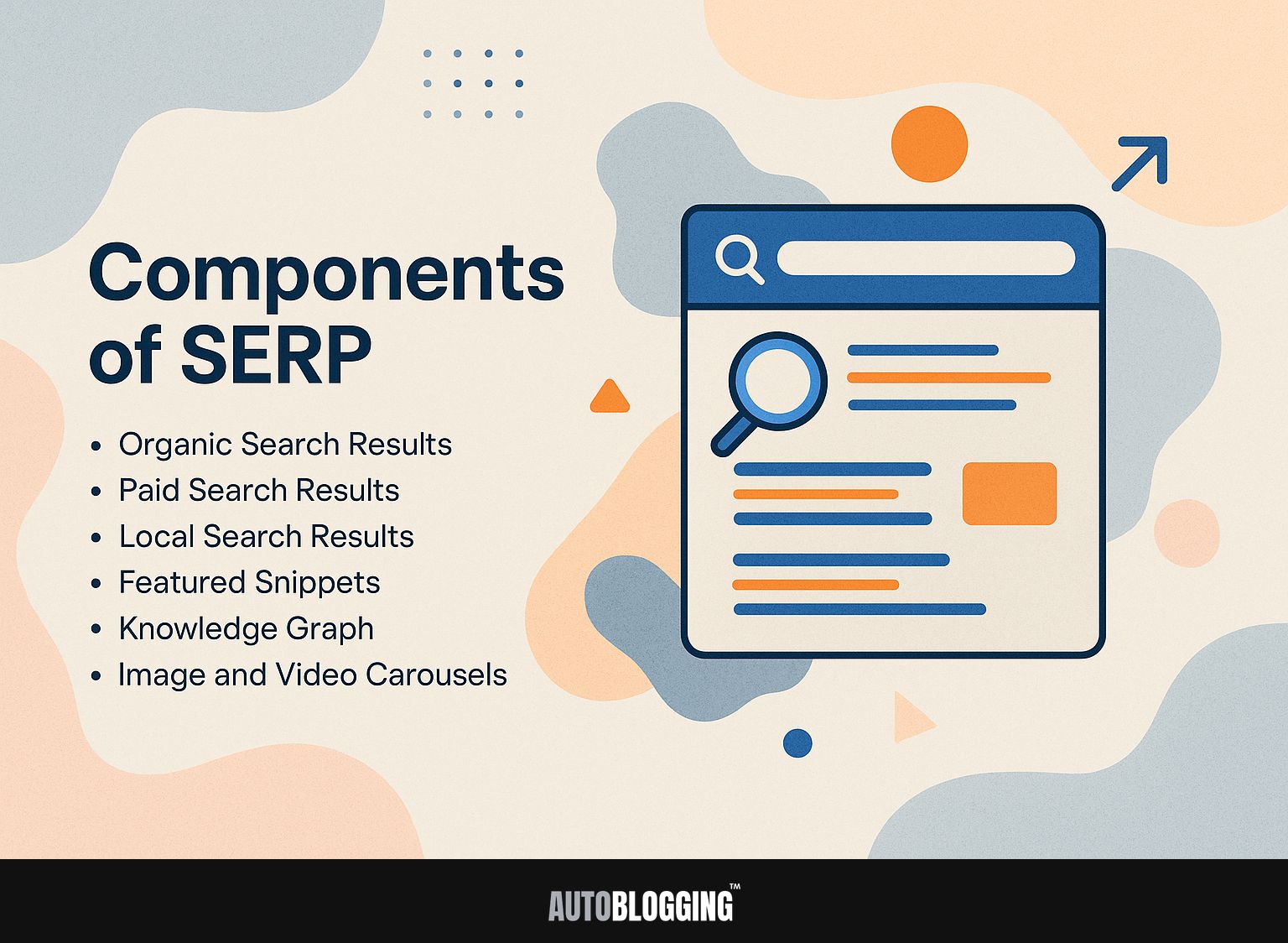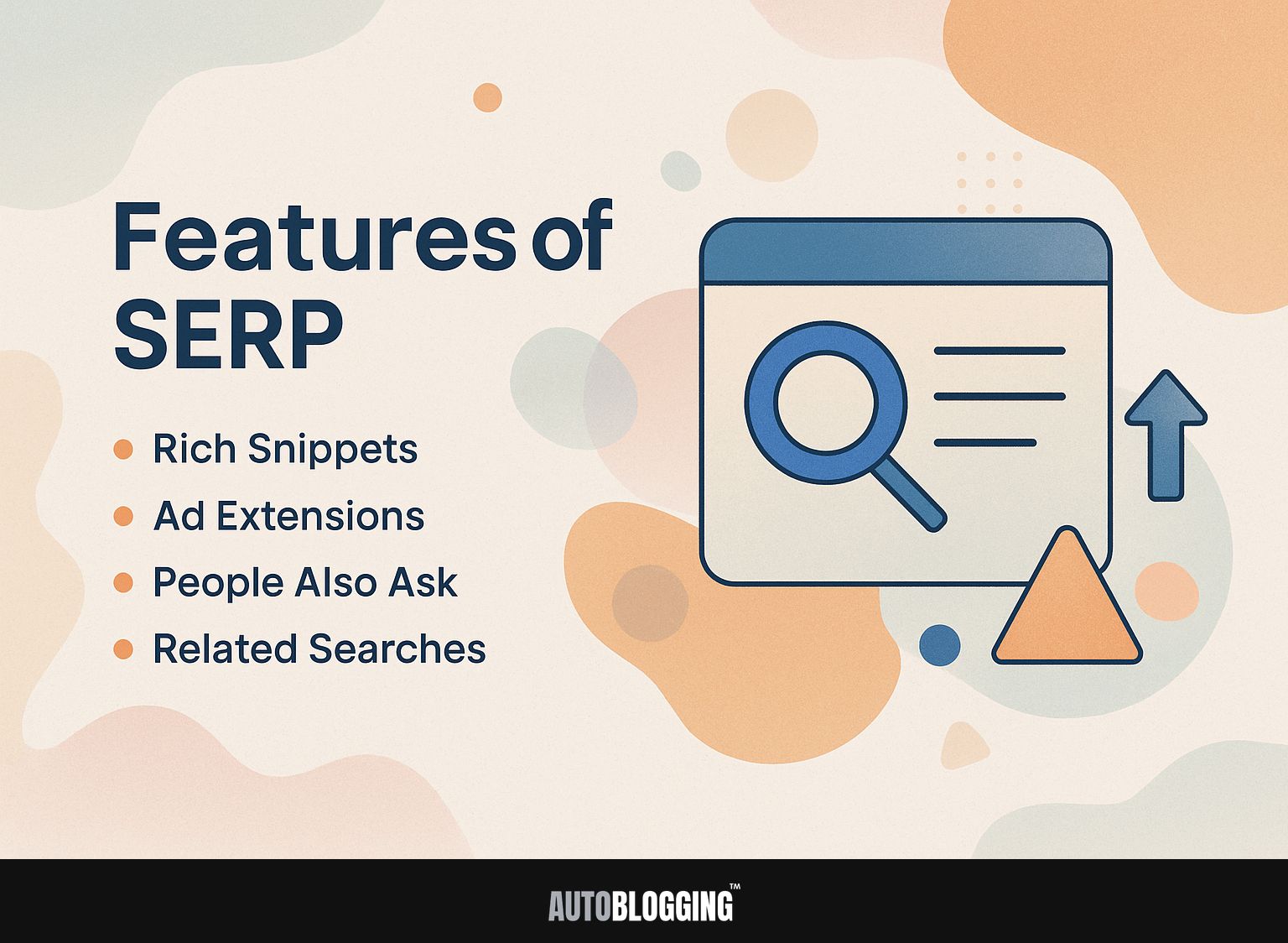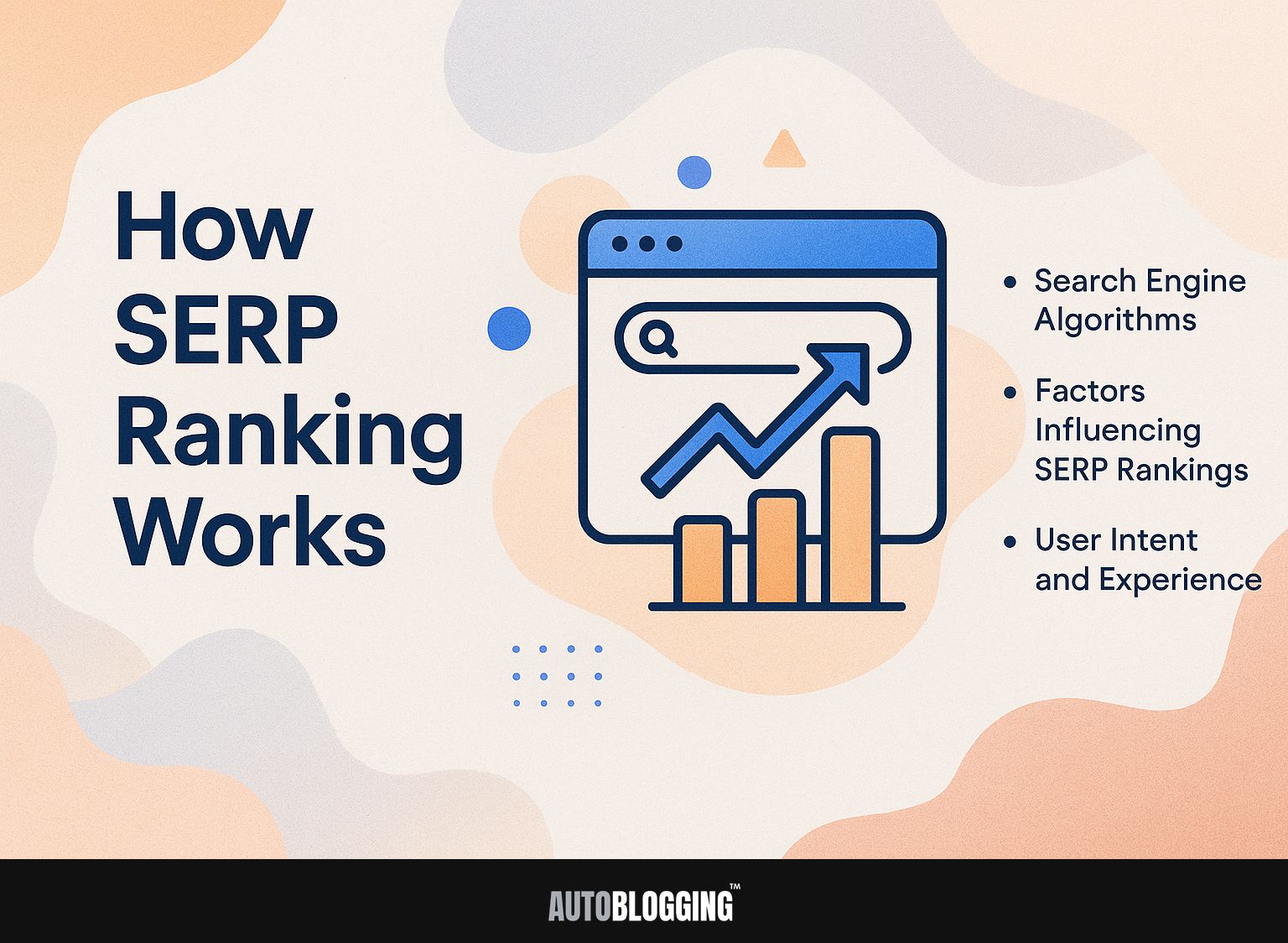Knowing what a SERP (Search Engine Results Page) is important for anyone wanting to use search engines successfully. As Google and other search engines display a mix of organic results and paid results, knowing the components and features of SERPs can significantly impact your SEO strategy. This article will look at SERPs, giving advice on how to make your site more visible and rank higher in search results.
Key Takeaways:
- SERP is the page showing results when someone enters a question or term into a search engine.
- The components of a SERP include organic, paid, and local search results, as well as featured snippets, knowledge graph, and image and video carousels.
- To rank higher on a SERP, it is important to focus on factors such as search engine algorithms, user intent and experience, and use effective strategies like keyword research and SEO techniques.
Contents
1. Definition of SERP
The Search Engine Results Page (SERP) displays the results generated by a search engine in response to a user’s query. This page shows organic listings and can include paid ads, local packs, and rich snippets.
For instance, a user searching for ‘best coffee shops’ might see a map listing local cafes at the top, followed by a mix of paid advertisements and organic search results.
Search algorithms are key in deciding ranking by considering factors such as keyword relevance and site authority.
Using SEO tools like SEMrush or Ahrefs can help you learn about these rankings and improve your content for better visibility in search engine results.
2. Importance of SERP in SEO
SERP is important for SEO because it affects a website’s visibility and the frequency of user clicks, which helps attract visitors.
Data shows that 75% of people do not look beyond the first page of search results, so ranking on that page is very important.
To increase your rankings, concentrate on on-page SEO elements such as enhancing metadata, including important keywords, and speeding up page loading. You can check how well a page is doing by using tools like Google’s PageSpeed Insights.
Creating quality content often helps maintain audience interest and increases the number of links to your site, which improves your site’s ranking.
Using Google Analytics to track metrics lets you change your strategy based on how users act, improving visibility and traffic over time.
Components of SERP
The SERP consists of different parts, each with its own function to show information to people. For example, featured snippets are designed to provide quick answers directly on the page. If you’re looking to optimize for this valuable SERP component, explore the benefits and optimization strategies for featured snippets.
1. Organic Search Results
Organic search results are listings that appear due to their relevance to the user’s search query rather than paid promotions.
The rankings of these organic results are primarily determined by effective SEO practices, such as keyword optimization, backlink strategies, and high-quality content.
For instance, while paid listings often boast higher click-through rates (CTR), organic results typically enjoy a CTR of around 28.5%, compared to just 2-3% for paid ads according to recent studies.
This stark difference highlights the value of investing time in SEO techniques. Creating interesting content and using the right keywords can improve your website’s visibility, resulting in more visitors and greater trust.
2. Paid Search Results
Paid search results are advertisements that appear at the top or bottom of the SERP, offering immediate visibility for businesses.
PPC advertising, particularly through Google Ads, typically charges businesses on a cost-per-click (CPC) basis, which can range from a few cents to over $50 per click, depending on the competitiveness of the keywords.
Higher bids generally lead to better ad placement, increasing visibility and potential clicks. For example, keywords like ‘insurance’ are more expensive due to high competition, while niche phrases may cost less.
Using tools like the Google Keyword Planner can help determine costs and expected traffic, allowing advertisers to strategically select keywords that balance budget and visibility effectively.
3. Local Search Results
Local search results showcase businesses relevant to the user’s location, prominently featured in the local pack of the SERP.
To improve your local pack rankings, update and make your Google My Business (GMB) profile better. Check that your business name, address, and phone number are accurate and match on all platforms.
Encourage customer reviews because better ratings can improve visibility. Local citations-mentions of your business name and details on other websites-are also very important; make sure to list your company in local directories and industry-specific sites.
Using these strategies together can greatly improve your local SEO results. If interested, you might appreciate our guide on navigating the path to higher rankings in regional search landscapes.
4. Featured Snippets
Featured snippets are selected search results that appear at the top of Google’s SERP, providing direct answers to user queries.
To make content more likely to appear in featured snippets, begin by using question-based headings that match typical user questions. Use structured data markup so Google can more easily recognize your content, increasing the chances it will be chosen.
For instance, if you’re writing about ‘best practices for SEO,’ frame your sections as questions like “What are effective SEO strategies?” and “How can I improve my website’s ranking?” Keep responses concise-aim for 40 to 50 words to match Google’s preferred snippet length.
This approach increases visibility and drives traffic to your site.
5. Knowledge Graph
The Knowledge Graph is a database used by Google to improve search results with organized information, helping users better grasp the content.
To improve your chances of appearing in the Knowledge Graph, implement schema markup on your website. This structured data helps search engines understand your content context.
Start by using tools like Google’s Structured Data Markup Helper to generate the appropriate schema, focusing on types like LocalBusiness, Product, or Organization.
Make sure to include important information like your business name, address, phone number, and useful images.
Use the Rich Results Test tool to validate your markup. Greater visibility through Knowledge Graph listings can greatly increase user trust and involvement.
6. Image and Video Carousels
Image and video carousels are visual results that appear in SERPs, attracting users’ attention and encouraging engagement.
To make these carousels work better, concentrate on two main things: the alternative text for images and search engine optimization for videos.
When writing alt texts, clearly explain what the image shows and add important keywords. This helps more people access the content and improves how easily it can be found in searches. For instance, instead of “car.jpg,” use “red-sports-car-on-highway.jpg.”
For video content, use a clear title, add captions, and improve the video description with keywords. Putting videos on platforms such as YouTube helps you reach more people and brings more visitors to your website through backlinks, improving link worth.
Features of SERP
The SERP includes features to improve user experience and give fast, relevant information. Understanding these elements requires a solid grasp of their impact on search engine visibility-our SEO team analyzed over 1,000 SERP features to identify patterns in how Google displays these elements.
1. Rich Snippets
Rich snippets show extra details in search results, like ratings and prices, which makes listings more attractive to users.
To implement structured data for rich snippets, use schema markup types like Product, Review, and Article. Start by adding relevant JSON-LD or Microdata to your HTML.
For example, for a product, include attributes like name, image, price, and aggregateRating. After implementing the markup, validate your structured data with Google’s Structured Data Testing Tool.
Simply paste your URL or the code, and it will highlight any errors or warnings, ensuring your rich snippets appear correctly in search results.
2. Ad Extensions
Ad extensions make paid search ads more attractive by adding details like location and call buttons, which helps in getting more clicks.
There are different kinds of ad extensions you can use.
- Sitelink extensions let users visit specific pages on your site directly, making it easier for them to find and interact with your content.
- Callout extensions provide additional text to highlight unique offers or benefits, such as free shipping.
- Location extensions show your address and proximity to potential customers, which is critical for local businesses.
Adding these extensions can improve ad performance greatly; for example, companies using location extensions see store visits go up by as much as 25%.
3. People Also Ask
The ‘People Also Ask’ feature displays additional questions related to the user’s search, providing an easy way to find information.
To make this section better, start by doing thorough keyword research using tools such as SEMrush or Ahrefs to find frequently asked questions. Aim for questions that your target audience frequently asks.
Once you’ve picked your keywords, arrange your content using clear headings and concise answers. This makes it easy for Google to find snippets.
Adding FAQs at the end of your articles can make them similar to the ‘People Also Ask’ section, increasing your likelihood of showing up there. Regularly refreshing your material based on new questions keeps it current and visible.
4. Related Searches
Related searches appear at the bottom of the SERP, guiding users toward alternative queries and enhancing their search experience.
Looking at related searches helps you improve your content plan to match what users are looking for. For example, if a related search for “best running shoes” appears when users search for “running shoes,” consider creating content that addresses both.
Use tools like Google Trends to identify popular variations and questions surrounding the topic. Adding these related terms and questions to your content can improve SEO results, attract a wider audience, and bring in more natural traffic.
How SERP Ranking Works
The position of a webpage in search results depends on things like the quality of the content, SEO methods, and search engine rules.
1. Search Engine Algorithms
Search engine algorithms are rules used to rank pages in search results, and they change regularly. These algorithms, like Google’s Panda and Penguin updates, focus on content quality and link integrity, respectively.
Panda punishes websites with poor content, encouraging them to provide useful and informative material. In contrast, Penguin targets manipulative link-building tactics, promoting the need for natural link profiles.
To keep up with these changes, make sure your website provides distinct and useful content and follows honest SEO methods. Curious about how negative SEO can impact your site’s ranking? Our analysis explains the key risks involved.
Regularly audit your site’s performance using tools like Google Search Console to identify potential issues and maintain a strong ranking over time.
2. Factors Influencing SERP Rankings
Many things affect search engine result page rankings, like how well the content matches the search, links from other websites, and how fast the site loads, all important for doing well in SEO.
To improve your SEO, focus on creating relevant content. Ensure your articles answer specific user questions and include appropriate keywords.
To get backlinks, use tools like Ahrefs to identify websites that could link to you and write custom emails to contact them.
Making your website load faster is important. Use Google PageSpeed Insights to identify issues and fix them by decreasing image sizes and using browser caching for quicker access. Regularly check your site’s performance to keep strong search engine rankings.
3. User Intent and Experience
How users interact with content and what they want are important for search engine rankings. Search engines give preference to content that satisfies users’ needs.
Figuring out what users want means telling the difference between searches meant for buying and those for getting information. For instance, someone searching for “buy running shoes” is likely ready to make a purchase, indicating a transactional intent.
In contrast, a search for “how to choose running shoes” demonstrates an informational intent. To effectively target these intents, create dedicated content: product pages and reviews for transactional queries, and how-to guides or blog posts for informational searches.
Tools such as Ahrefs or Google Keyword Planner can determine what keywords people are looking for, helping you adjust your content strategy.
Strategies to Rank Higher on SERP
To rank better on search engine results pages, use good SEO methods by focusing on:
- Using the right keywords, which can be facilitated by exploring top keyword research tools in 2023
- Creating high-quality content
- Improving technical aspects
1. Keyword Research
Effective keyword research is the cornerstone of SEO, enabling marketers to identify high-traffic search queries to target. Two powerful tools for this task are SEMrush and Ahrefs.
SEMrush ($119.95/month) gives keyword suggestions and information on competition levels and search volume. This helps you decide which keywords to focus on.
Ahrefs ($99/month), on the other hand, excels in backlink analysis, helping you assess the potential difficulty of ranking for specific keywords.
By using these tools, you can improve your content plan by concentrating on keywords that attract a lot of visitors and are not too competitive, leading to more natural visitors to your website.
2. On-Page SEO Techniques
Methods for on-page SEO help improve page rankings and make the user experience better. To properly set up on-page SEO, begin by improving title tags and meta descriptions. Make sure they include important words and draw in users.
Use header tags (H1, H2, H3) to clearly structure your content, helping search engines and readers understand the arrangement.
Include links to related pages to help visitors find information easily. This encourages them to spend more time on your site.
Regularly monitor metrics such as organic traffic, bounce rate, and click-through rates to track your progress and adjust strategies accordingly.
3. Off-Page SEO Techniques
Off-page SEO techniques revolve around building backlinks and enhancing a website’s authority through external means.
To effectively implement off-page SEO, focus on two primary strategies: outreach to influencers and guest blogging.
Begin by identifying influencers in your niche using tools like BuzzSumo, which allows you to evaluate their engagement levels. Send customized emails that focus on shared advantages for working together.
Simultaneously, target relevant blogs for guest posting opportunities, ensuring your content aligns with their audience. You can monitor the performance of your backlinks using Moz Link Explorer. It helps you keep an eye on how many backlinks you have and how good they are, showing how your site’s authority grows over time.
4. Technical SEO Considerations
Technical SEO encompasses optimizations that help search engines crawl and index a site effectively.
To improve your site’s technical SEO, focus on structuring your site more effectively, ensuring it functions properly on mobile devices, and configuring XML sitemaps.
For example, use Screaming Frog to check website issues; the $200 complete version lets you examine URLs, find broken links, and create sitemaps.
Make sure your website works well on mobile devices by using Google’s Mobile-Friendly Test tool to check it. This way, you’ll make sure that all elements work well on different screen sizes, which is important for user experience and search rankings.
Frequently Asked Questions
1. What is a SERP (Search Engine Results Page)?
A SERP, or Search Engine Results Page, is the page that appears after a user enters a search query into a search engine, such as Google. It displays a list of relevant websites and other content related to the search query.
2. What are the components of a SERP?
A SERP typically consists of the following components: the search bar, the organic search results, paid search results (if applicable), featured snippets, knowledge graph, and related searches. These components may vary depending on the search engine and the type of search query.
3. What are the features of a SERP?
A SERP can include various features such as images, videos, maps, news articles, ads, and more. These features give users a variety of outcomes that closely match their search request.
4. How can I rank higher on a SERP?
Ranking higher on a SERP means appearing closer to the top of the search results. To improve your ranking, you can focus on search engine optimization (SEO) techniques, such as using relevant keywords, creating high-quality content, and building backlinks from authoritative websites.
5. Why is it important to rank higher on a SERP?
Ranking higher on a SERP can greatly benefit your website or business. It can increase your visibility and bring more traffic to your site, which can lead to more conversions and potential customers. It also helps you establish authority and credibility in your industry.
6. Can I pay to rank higher on a SERP?
Yes, you can pay for ads to appear on the top of a SERP, also known as paid search results. However, this does not promise a better position in the natural search results. It’s important to have a balanced SEO and paid search strategy for optimal results on a SERP.






